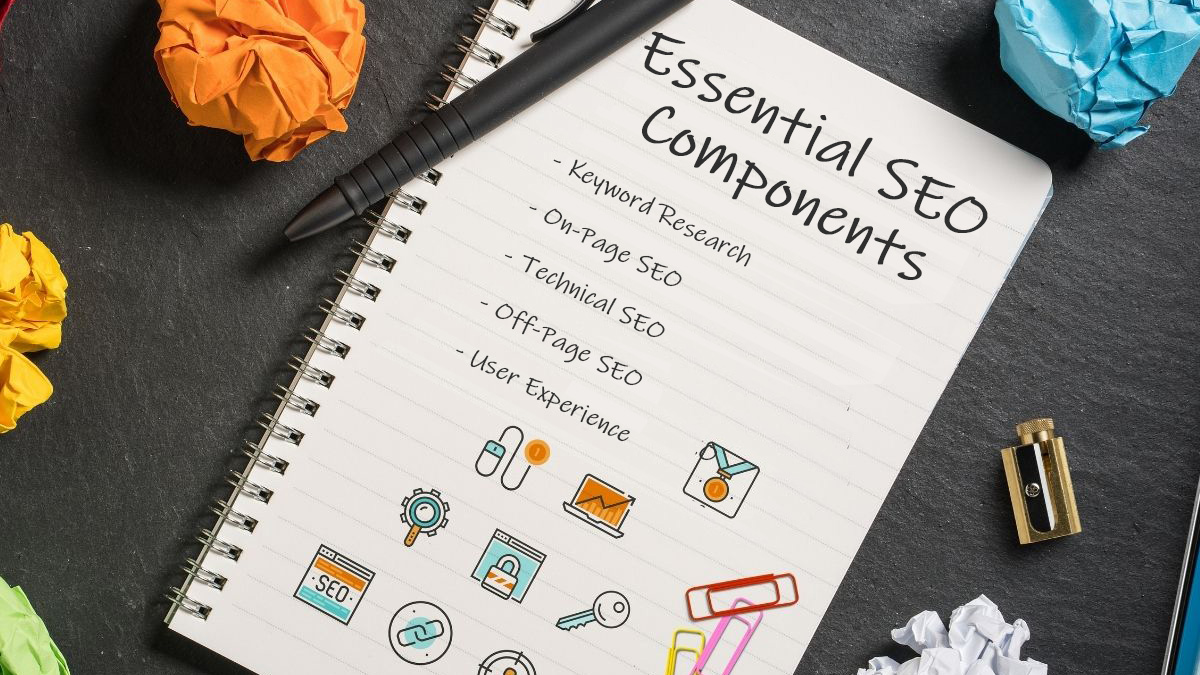In our increasingly digitized world, effective Search Engine Optimization (SEO) has become indispensable for establishing a strong online presence. SEO is a strategic blend of practices that aim to boost a website’s visibility, draw organic traffic, and elevate the user experience.
Proficiently understanding and implementing these components is essential for standing out amidst the intensely competitive and ever-evolving digital landscape. By doing so, businesses can achieve higher search engine rankings and secure lasting online success.
In this post, we’ll delve into the five components of SEO that are critical. Mastery of these elements is paramount for any business aspiring to surpass its competitors and thrive in the modern digital marketplace.”
Overview of the Five Components of SEO
- Keyword Research and Analysis: This process involves identifying key keywords that your target audience is actively searching for. These keywords should be pertinent to the content and services offered by your website.
- On-Page SEO: This entails optimizing elements on your website’s pages, such as content, title tags, meta descriptions, and headers. The objective is to make each page as relevant as possible to the target keywords.
- Technical SEO: This entails optimizing the backend structure and foundation of your website for search engine crawlers. This covers aspects such as site speed, mobile optimization, site architecture, structured data, and security.
- Off-Page SEO: This pertains to all actions taken outside of your website to improve its ranking on search engines. Techniques include link building, social media marketing, and influencer outreach.
- User Experience (UX) and Engagement: This pertains to the user’s experience and perception of a website. A positive UX, coupled with strong engagement as evidenced by metrics such as low bounce rates and extended dwell times, can boost a site’s SEO ranking.
SEO agencies utilize these five components of SEO to enhance a website’s visibility and rank on search engines. By meticulously applying these components, they ensure that their clients’ websites meet search engine standards and appeal to users, leading to higher rankings and increased organic traffic.
Keyword Research and Analysis

Keyword Research and its Role in SEO
Keyword research is an important aspect of SEO. It involves identifying and analyzing the terms that people enter into search engines in order to optimize content around those terms. By understanding the specific words and phrases your audience uses, you can create content that aligns with their search intent.
Keyword research aids in driving targeted traffic to your website, enhancing your site’s visibility on search engine results pages (SERPs), and improving conversion rates. It provides insight into the queries of your audience, market demand, and competition, guiding your overall SEO and content strategy.
Techniques for Finding Relevant Keywords
- Brainstorming and Understanding Target Audience
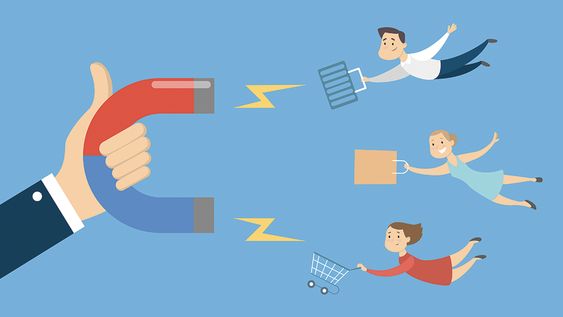
Brainstorming and understanding your target audience are essential first steps in crafting an effective marketing strategy. Brainstorming brings forth creative ideas and strategies tailored for your audience, encouraging innovative solutions to address customer concerns, offer value, and set your brand apart.
Conversely, gaining insights into your target audience means grasping their needs, preferences, behaviors, and challenges. This understanding can be derived from market research, customer surveys, and analyzing customer data.
Tools such as Google Analytics, social media insights, and CRM software offer invaluable information. By merging inventive brainstorming with in-depth knowledge of your audience, you can design captivating content and campaigns that resonate, engage, and lead to conversions.
- Utilizing Keyword Research Tools

Keyword research tools are indispensable in an SEO strategy, assisting in the identification and analysis of keywords that align with your content. They offer essential insights such as search volume, keyword difficulty, competition level, and related search queries.
Platforms like SEMrush, Google Keyword Planner, and Ahrefs are adept at pinpointing both high-volume and long-tail keywords specific to your niche. They also highlight the questions users pose online, guiding your content approach.
By leveraging these tools, you gain a deeper understanding of what your audience seeks and the terminology they employ, enabling precise content tailoring. Such precision not only amplifies your SEO, drawing focused traffic to your website, but also elevates user engagement and conversion rates, leading to holistic digital marketing triumph.
Analysis of Keyword Competition and Search Volume
Analyzing keyword competition and search volume is a vital aspect of SEO strategy. Keyword competition refers to the difficulty of ranking for a particular keyword, considering the number of websites targeting the same term. High competition keywords can be challenging to rank for, particularly for new or smaller websites. On the other hand, search volume represents the number of searches performed for a keyword over a given period.
High search volume indicates popular keywords, but they often come with high competition. SEO success lies in finding a balance: targeting keywords with a reasonable search volume and manageable competition level. Tools like Ahrefs, Google Keyword Planner, and SEMrush can provide these insights, helping to optimize your content strategy.
Importance of Long-Tail Keywords and User Intent
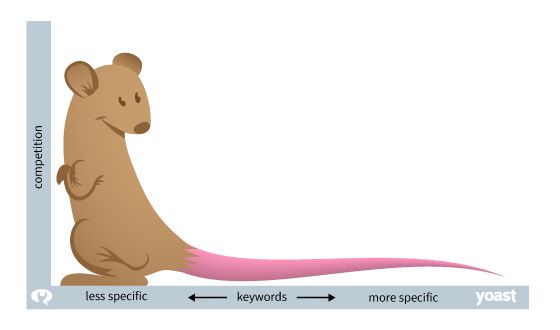
Long-tail keywords and user intent are crucial aspects of an effective SEO strategy. Long-tail keywords are specific, often longer phrases that are highly relevant to specific user searches. Though they might have lower search volumes, they typically attract more qualified traffic and have higher conversion rates due to their specificity.
Understanding user intent, the objective a user has while typing a query into a search engine, is equally important. It could be informational (seeking information), navigational (seeking a particular website), or transactional (intending to buy). Aligning your content with user intent and incorporating long-tail keywords can significantly improve your SEO performance, making it easier for the right users to find your content at the right stage of their journey, and increasing the likelihood of conversion.
On-Page Optimization
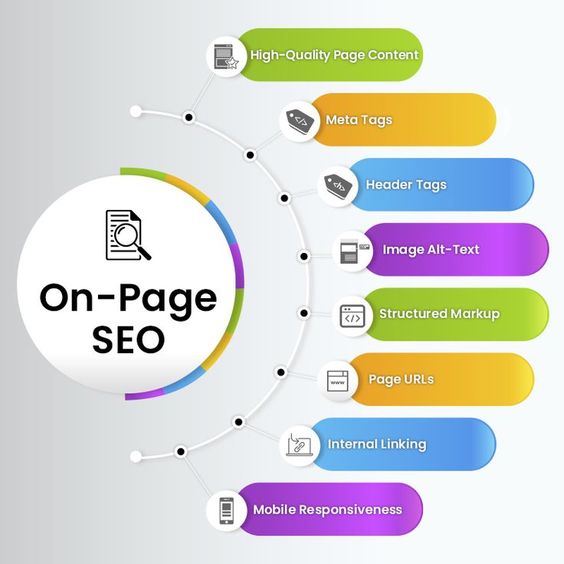
Definition and Purpose of On-page Optimization
On-page optimization, also known as on-site optimization, refers to the technique of optimizing individual web pages to improve a website’s search engine rankings and earn organic traffic. It includes the optimization of both the content and the HTML source code of a page.
The purpose of on-page optimization is to help search engines comprehend your website and its content, and also identify whether it is relevant to a searcher’s query. It includes tasks like strategically placing high-quality keywords in your content, creating engaging meta descriptions, using SEO-friendly URLs, optimizing images, and ensuring mobile-friendliness.
Overall, on-page optimization makes your website more user-friendly and easier to navigate, leading to higher user engagement, lower bounce rates, and improved ranking in search results.
Title Tags, Meta Descriptions, and Header Tags

Title tags, header tags, and meta descriptions play significant roles in on-page SEO. A title tag defines a web page’s title and is prominently displayed on search engine results pages (SERPs), influencing click-through rates. It should be concise, descriptive, and include relevant keywords.
A meta description is a brief summary of a page’s content that appears under the title tag in SERPs. While not directly influencing rankings, a well-written meta description can increase click-through rates by enticing users.
Header tags (H1 to H6) structure your content, making it easier for readers to navigate and for search engines to understand. The H1 tag typically includes the page’s main keyword and should be used once per page, while H2-H6 tags can be used multiple times to highlight subheadings.
Optimizing URL Structure and Internal Linking
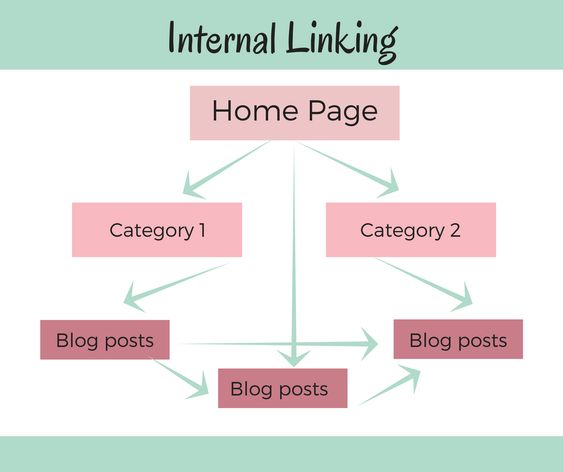
URL structure and internal linking greatly impact website SEO. For optimal URL structure, use short, descriptive URLs containing keywords that reflect page content. Avoid using special characters, and use hyphens to separate words. Canonicalize URLs to avoid duplication. For internal linking, use descriptive anchor text relevant to the target page’s content.
Maintain a logical hierarchy, and distribute links evenly across your site. Use breadcrumb menus for easy navigation and to boost internal linking. Limit the total number of links on a page to maintain link equity. Finally, frequently update and test internal links to ensure they are functioning and driving users and crawlers to the correct locations.
Importance of High-Quality, Relevant Content

High-quality, pertinent content is pivotal to the triumph of any digital marketing strategy. It not only draws, engages, and retains users but also amplifies your website’s visibility on search engines. By delivering content that’s valuable and resonates with your audience’s preferences and queries, you can position your brand as an industry leader and foster trust among your readers.
Search engines like Google prioritize delivering top-notch content that best matches user searches. Thus, by producing premium content, you heighten your chances of out-ranking competitors on search engine results pages, leading to an influx of organic traffic.
Furthermore, standout content spurs social shares and attracts backlinks, intensifying your SEO endeavors. At its core, superior and apt content stands as the cornerstone of a potent SEO strategy.
Also Read: How to Find the Right Content for Different Stages of Content Marketing Funnel?
Keyword Placement and Density
Keyword placement and density play pivotal roles in SEO. Begin by identifying high-volume, pertinent keywords. Position primary keywords in key locations such as the title, meta description, headers, and opening paragraph. They should also appear in the URL, image alt text, and be woven naturally into the content.
Integrate secondary keywords throughout the remaining content. Keyword density—the ratio of a keyword’s occurrence to the total word count—should hover around 1-2%. Evade the trap of keyword stuffing, which can incur search engine penalties. Instead, concentrate on crafting valuable content that seamlessly incorporates your keywords. Using long-tail keywords, synonyms, and LSI keywords can further elevate relevance without resorting to keyword stuffing.
Image Optimization and Alt Tags
Image optimization is a key facet of both website development and SEO. This process entails reducing image file sizes without compromising their quality, thereby enhancing page load speeds—a vital component for both user experience and search engine rankings.
Compression tools can assist in this endeavor. Alt tags, short for ‘alternative text descriptions,’ are embedded in HTML code to describe an image’s content and serve dual purposes. They furnish a textual substitute for visually impaired users employing screen readers.
From an SEO perspective, they give search engines a clearer context for indexing. Should an image fail to load, its alt text will appear, letting users understand its intended subject. Properly optimized images, complemented by fitting alt tags, significantly bolster a website’s SEO efficacy.
Technical SEO
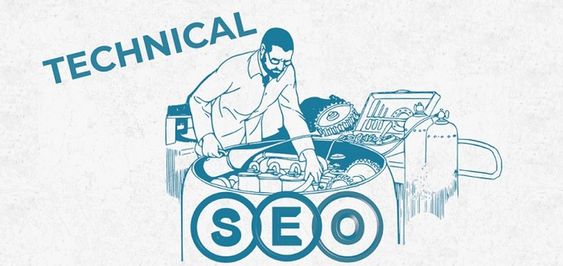
Technical SEO and its Significance
Technical SEO involves optimizing both website and server components, ensuring that search engine spiders can more efficiently crawl and index your site, which boosts organic rankings. Central to this are elements like a coherent XML sitemap for streamlined navigation, a robots.txt file directing crawlers, and a well-organized URL structure.
Your website should also prioritize mobile responsiveness, utilize a secure HTTPS protocol, and ensure swift page load times to enrich the user experience. Employ structured data markup to optimize search engine results page (SERP) displays. Consistently address issues like 404 errors, broken links, and duplicate content to maintain site health. Implement proper canonical tags to prevent content duplication.
The importance of technical SEO cannot be overstated; it’s fundamental to a website’s visibility in search results, simplifying navigation and comprehension for both users and search engines.
Website Loading Speed and Mobile Optimization
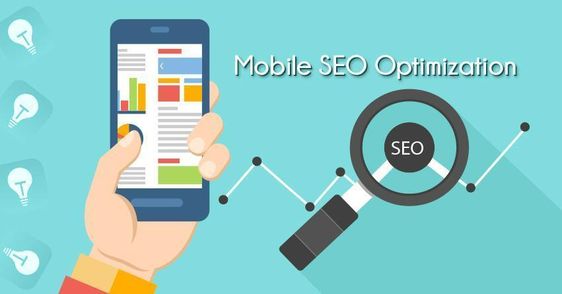
Both website loading speed and mobile optimization are pivotal for SEO and enhancing user experience. Swift-loading pages can mitigate bounce rates and promote extended site visits — factors that search engines weigh heavily during page ranking.
Using tools like Google’s PageSpeed Insights can pinpoint issues affecting load speed. It’s imperative to ensure your site is tailored for mobile devices, especially given the prevalence of mobile searches over desktop ones.
With Google’s shift to mobile-first indexing, it primarily relies on a site’s mobile version for both indexing and ranking. Absent mobile optimization, you stand to compromise your visibility in SERPs and potentially alienate a significant segment of internet users.
Also Read: The 15 Best Technical SEO Tools Every Webmaster Should Know!
XML Sitemaps and Robots.txt Files

XML sitemaps and robots.txt are important tools for helping search engines understand and navigate your website. An XML sitemap is a file that lists your website’s important pages, allowing search engines to discover and index them. It’s especially important for large websites, new websites, or those with few external links.
The robots.txt file guides search engine bots on which pages or parts of your site they can or cannot crawl, ensuring that they spend their crawl budget wisely. It can be used to prevent crawling of duplicate content or certain sections of the site. Both contribute to effective SEO.
Canonicalization and URL Structure
Canonicalization is the practice of designating the “canonical” or “preferred” version of a webpage through a canonical tag, mitigating issues of duplicate content. This clarifies for search engines which version should be indexed and ranked. URL structure, on the other hand, pertains to crafting coherent, succinct, and meaningful URLs that are user-friendly and easily decipherable by search engines.
Optimally, URLs should encapsulate pertinent keywords and sidestep extraneous characters or words. Implementing proper canonicalization coupled with thoughtfully structured URLs bolsters a website’s SEO, facilitating search engines in their crawl, comprehension, and indexation of site content.
Fixing Broken Links and Resolving Crawl Errors
Addressing broken links and rectifying crawl errors are indispensable for upholding a robust website and enhancing SEO. Broken links culminate in 404 error pages, impairing user experience and potentially diminishing your site’s search engine ranking. Periodic assessments for broken links and their subsequent rectification can boost site navigation and lend credibility.
Crawl errors emerge when search engine bots encounter difficulties accessing particular pages on your website, potentially preventing those pages from being indexed. By rectifying these errors, you ensure that search engines can proficiently crawl and index your content, a vital factor for prominence in search engine results. Both of these measures are pivotal for achieving peak website functionality.
Enhancing Site Navigation and User Experience
Enhancing site navigation and user experience is key to retaining visitors and improving SEO. A well-structured, intuitive navigation helps users find information quickly and easily, reducing bounce rates and encouraging longer visits. This includes a clear menu structure, breadcrumb trails, and effective internal linking.
User experience goes beyond navigation to encompass site speed, mobile-friendliness, readability, and visual appeal. High-quality, relevant content that meets user needs is also essential. Positive user experience signals to search engines that your site is valuable, which can boost rankings. By prioritizing user experience and navigation, you can enhance user satisfaction and your site’s SEO performance.
Off-Page Optimization
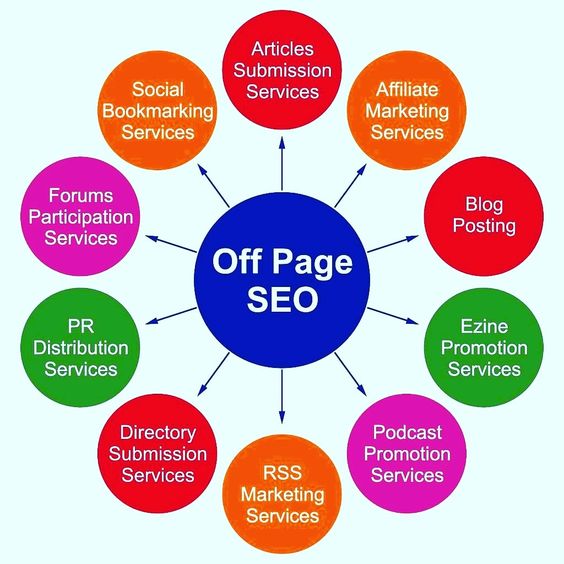
Definition and Purpose of Off-Page Optimization
Off-page optimization encompasses actions executed outside of your website to influence its rankings on search engine results pages (SERPs). The aim is to bolster the site’s perceived popularity, relevance, trustworthiness, and authority. This is often achieved by securing backlinks from other esteemed websites and leveraging tactics like social media and influencer marketing.
Off-page optimization’s essence lies in generating affirmative signals to search engines from external authoritative sources, thereby reinforcing the impact of your on-page SEO initiatives. This strategy is instrumental in elevating a website’s visibility, trustworthiness, and overall SERP ranking.
Also Read: The Do’s and Don’ts Of Link Building
Importance of Building High-Quality Backlinks

Building high-quality backlinks is a cornerstone of off-page SEO. Backlinks are the links from other websites that point to your website. Search engines see them as credible sources, meaning the more high-quality backlinks you possess, the more trustworthy and authoritative your site appears. This can significantly boost your rankings in search engine results pages (SERPs).
However, it’s not just about quantity; the quality and relevance of the linking sites also matter. Backlinks from reputable, high-traffic sites in your industry carry more weight. Thus, a strategic backlink-building effort can improve your site’s credibility, organic visibility, and referral traffic.
Strategies for Acquiring Backlinks
- Guest Blogging and Content Outreach
Guest blogging is writing articles for other websites, often in exchange for a backlink. This not only improves your site’s authority through high-quality backlinks but also exposes your brand to a wider audience. Content outreach is the process of promoting your content to influencers, bloggers, or other relevant websites with the aim of earning backlinks or mentions. It involves identifying potential outreach targets, tailoring your approach to each, and providing them with a compelling reason to share or link to your content. Both strategies enhance visibility, credibility, and SEO performance.
- Social Media Promotion and Influencer Marketing

Social media promotion and influencer marketing stand as potent avenues for enhancing online visibility and SEO. Promoting content on social platforms not only engages your audience but also drives traffic to your website, potentially garnering shares or backlinks.
Meanwhile, influencer marketing entails collaborating with individuals boasting substantial online followings to amplify your brand or content. These influencers can broaden your reach, often resulting in a surge in website traffic, social engagement, and potential backlinks, especially if they maintain a personal blog or website. While these strategies may not directly bolster SEO rankings, they indirectly contribute by magnifying your content’s outreach and increasing opportunities for backlinks.
- Online Directories and Local Citations
A local citation refers to the online mention of a local business, typically featuring its name, address, and phone number (NAP). Popular online directories such as Yelp and Google My Business serve as common sources for these citations.
When a business’s details are consistent and accurate across various directories, it bolsters local search engine rankings and visibility. This consistency signals to search engines the credibility and active status of the business. Moreover, these citations offer potential customers vital information about your enterprise.
As such, ensuring your business is listed in pertinent online directories and maintaining precise local citations can markedly boost your online presence and overall SEO efficacy.
Social Signals and Their Impact on SEO
Social signals pertain to engagement metrics on social media platforms, encompassing likes, shares, comments, and follows. Although Google has clarified that these signals don’t directly influence SEO rankings, their indirect effects are noteworthy.
Enhanced engagement can amplify your content’s reach, driving more traffic to your website. This, in turn, can lead to increased backlinks from other sites, a significant factor in SEO rankings. Moreover, social signals might aid in quicker content indexing. Thus, while they may not be a direct ranking element, maintaining an active social media profile can undeniably bolster and enhance your SEO endeavors.
Monitoring and Managing Online Reputation

Maintaining a positive online reputation is pivotal for upholding your brand’s trustworthiness and credibility. This entails monitoring online mentions of your brand, addressing customer feedback and reviews, and actively fostering favorable relationships with your audience. It’s imperative to promptly and professionally address negative feedback, as it can tarnish your brand’s reputation and dissuade potential customers.
Conversely, acknowledging and expressing gratitude for positive feedback is equally vital. A robust online reputation not only fosters customer loyalty but also bolsters SEO rankings and boosts conversion rates. As such, adept online reputation management is a cornerstone of any business’s digital marketing strategy.
User Experience and Engagement

Role of User Experience in SEO
User experience (UX) plays a critical role in SEO. Search engines have the goal of providing users with the most relevant and high-quality results, making UX a key ranking factor. Factors like site speed, mobile-friendliness, easy navigation, and high-quality content significantly impact UX.
A positive UX can lead to longer site visits, lower bounce rates, and higher conversion rates, all of which are signals to search engines of a high-quality site. Moreover, Google’s introduction of Core Web Vitals as ranking signals further emphasizes the role of UX in SEO. Hence, optimizing UX is essential for enhancing SEO performance and user satisfaction.
Mobile Responsiveness and User-Friendly Design
Mobile responsiveness and user-friendly design are paramount in today’s digital age. It ensures a website or application adjusts its layout, images, and functionalities to suit different devices, particularly smartphones and tablets. This enhances the user experience, making navigation and interaction seamless, regardless of the device used. It’s all about ease-of-use, speed, and intuitive interface, from large fonts to touch-friendly buttons.
Ultimately, a mobile-responsive, user-friendly design fosters greater engagement, customer satisfaction, and repeat visits, critical for businesses aiming to reach a broader audience in our increasingly mobile-centric world.
Page Load Time and Site Performance
Page load time and overall site performance play pivotal roles in determining both user experience and search engine rankings. Pages that load quickly enhance user satisfaction, leading to reduced bounce rates and heightened engagement and conversions.
Conversely, slow-loading pages can cause higher abandonment rates, resulting in potential revenue loss. Aspects of site performance encompass server response times, the efficiency of HTML, CSS, and JavaScript, and the overall page size. Techniques such as optimized images, code minification, and effective caching can greatly elevate site performance.
Google’s Core Web Vitals highlight performance metrics including Largest Contentful Paint (LCP), First Input Delay (FID), and Cumulative Layout Shift (CLS) as integral components of their ranking criteria.
Optimizing for User Engagement

- High-Quality and Engaging Content
High-quality, engaging content is the cornerstone of successful digital strategies. It involves crafting informative, unique, and compelling material tailored to resonate with your target audience. This means not only understanding their needs but also delivering content that addresses their questions, offers value, or entertains.
Such content not only boosts SEO efforts, driving organic traffic and enhancing search engine placements, but it also heightens user engagement, prompts social sharing, and fosters trust—paving the way for conversions. Whether it’s blogs, articles, videos, infographics, social media posts, or podcasts, diverse and meticulously curated content that’s updated regularly stands out as a potent tool to set your brand apart in the digital realm.
- Clear Calls-To-Action (CTAs)

Clear calls-to-action (CTAs) are pivotal in guiding users towards desired objectives on websites or digital marketing materials. They provide direction, provoke immediate responses, and can dramatically improve conversion rates. CTAs could range from ‘Subscribe Now’, ‘Add to Cart’, ‘Download Here’ to ‘Contact Us’, depending on the specific goal.
Effective CTAs are concise, compelling, and use action-oriented language. They’re visually distinct, placed strategically for maximum impact, and resonate with the overall design. A well-crafted CTA creates a sense of urgency, offers a clear benefit, and aligns with the user’s intent, significantly enhancing the user experience and marketing effectiveness.
- Easy Site Navigation and Internal Linking
An intuitive and well-organized navigation system is crucial for ensuring users can effortlessly locate the information they seek, subsequently boosting engagement and conversion rates. This system hinges on methodically arranged menus, distinct categories, and breadcrumb trails, guiding users seamlessly through a website’s structure.
In tandem, internal linking connects related pages within a site, allowing users to naturally explore more content. Such linking not only assists search engines in grasping a website’s layout and the significance of its pages, but it also optimizes SEO by distributing ‘link equity.’ A robust internal linking strategy can also increase user dwell time and reduce bounce rates. In essence, streamlined site navigation combined with effective internal linking is pivotal for crafting a user-friendly website.
Wrapping Up
Every component of a robust SEO strategy is vital to ensure a website’s visibility, attract organic traffic, and boost user engagement and conversion rates. From mobile-friendly design and intuitive user interface to superior content, persuasive calls-to-action, and streamlined navigation with strategic internal links – each element holds significant importance.
When combined, they forge a holistic, user-centric methodology that elevates user experience while enhancing the website’s search engine performance. As the digital realm evolves, sustaining a cohesive and multi-dimensional SEO strategy becomes increasingly essential. It’s the key to standing out in a saturated online environment, engaging a broader audience, and ultimately, securing digital marketing triumph.
FAQs
How do clear calls-to-action (CTAs) contribute to SEO?
Clear CTAs guide users, boosting engagement and conversions, indirectly supporting SEO success.This can lead to increased user engagement and higher conversion rates, both of which contribute to the overall success of your SEO strategy.
What does user-friendly design mean in the context of SEO?
User-friendly design means creating a website that’s easy to navigate, aesthetically pleasing, and intuitive for users. This leads to increased user engagement, lower bounce rates, and longer dwell times.
How does effective site navigation and internal linking affect SEO?
Effective site navigation and internal linking enhance user experience and SEO. Navigation ensures quick access to content, reducing bounce rates. Internal linking guides search engines and users, boosting ‘link equity’ and site exploration.
Why are meta descriptions important?
Meta descriptions give users a brief overview of what to expect from the page, potentially increasing click-through rates from search results.
